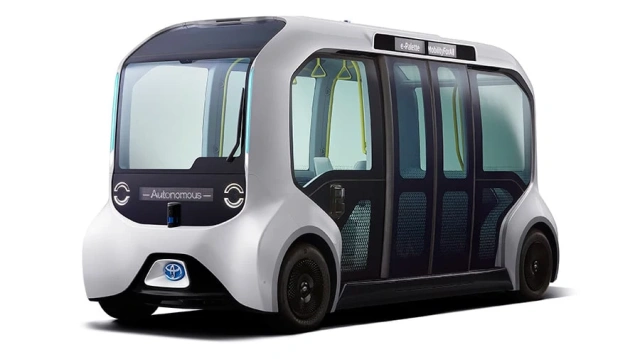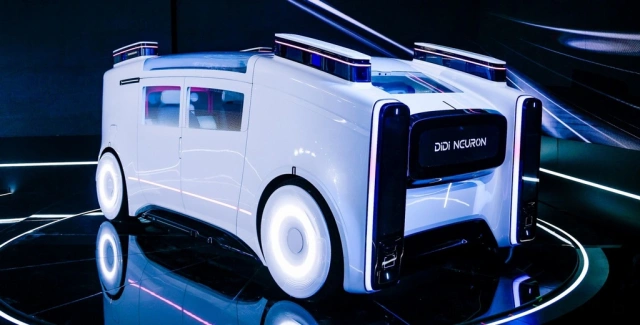Traveling without drivers has already become a reality for residents of some cities. Companies are not only developing fleets of such machines but also offering completely new concepts
Five to seven years ago, car manufacturers predicted that autonomous driving technology would become widespread by 2020. Now the developers admit that the task turned out to be much more difficult and expensive than expected. However, autonomous cars are already appearing on city streets in the form of robotaxis. RBC Trends talks about the latest projects in this area.
Where there is already a robotaxi
Cruise, backed by General Motors, launched the fully driverless Chevy Bolt robotaxi service in Austin, Texas, Phoenix, and San Francisco in 2022. The company also plans to test its next-generation Origin robotaxi on public roads in San Francisco by the end of 2023. The car looks like a shuttle without a steering wheel or pedals.
And Uber and self-driving technology maker Motional began developing their robotaxi service in Las Vegas in 2022. From the beginning of 2023, the service can also be ordered at night.
Lyft’s robotaxi service, which was also launched jointly with Motional, already operates in this city. A similar service is being developed in Los Angeles. Motional supplies Hyundai IONIQ5 electric vehicles to Uber and Lyft robotaxis.
Lyft also teamed up with self-driving software startup Argo AI and Ford to launch robotaxis in Miami and Austin. Passengers are transported by Ford Escape hybrid vehicles.
 In China, the robotaxi niche has been occupied by the tech giant Baidu, which is testing its self-driving cars in 10 cities across the country.
In China, the robotaxi niche has been occupied by the tech giant Baidu, which is testing its self-driving cars in 10 cities across the country.
Toyota is currently testing its e-Palette robotic shuttles without a steering wheel or pedals only in isolated areas. Thus, robotaxis were tested in the Olympic Village during the Paralympic Games in Tokyo in 2021. Then there were some incidents, and the tests had to be stopped to improve the car.

Tesla, which has been promising to release its robotaxi for several years now, confirmed its intentions at the December presentation of the Semi electric trucks in 2022 . In 2023, Tesla announced the creation of driverless taxis without control devices – a steering wheel and pedals. The company promises to show the first such car in 2024.
At the same time, companies are developing new robotaxi projects that can be seen on the roads in the near future.
Taxi without a steering wheel
Waymo, which is owned by Alphabet, announced a new robotaxi for its service in December 2022. Waymo’s current cars are the Chrysler Pacifica and Jaguar I-Pace, which have different cameras and sensors, but are otherwise similar to regular models. However, as part of the Google Self-Driving Car Project, a Firefly model will be released without a steering wheel.
Robotaxi was developed jointly with the Chinese Geely. It has two seats in the front and a screen in the center between them. It displays self-driving status (such as Yield to Pedestrian), maps, and music controls. Additional screens are installed behind the driver and front passenger seats for the second row. Robotaxis are expected to join taxi service Waymo One’s fleet “in the coming years.”
The company has already rolled out its service in Texas, Arizona, New York and San Francisco , and now its taxi will appear in Los Angeles. For now it is being tested with the participation of company employees. Finally, Waymo and Uber will launch a joint project in which users will be able to order a robotaxi for a ride or food delivery. It will launch later in 2023 in Phoenix, Arizona.
Taxi with a futuristic interior
In 2021, the American startup Zoox presented the concept of a robotic car of the future without the usual interior. The car is completely symmetrical – it has neither front nor rear, allowing the car to move in any direction.
All components in the design are duplicated, including motors and sensors. There are two lidars installed at each corner of the vehicle: one looking outwards and the other downwards. There are also three cameras installed in each corner. Two additional cameras were placed on the roof and five radars were placed in each corner.
There are four seats in the cabin, and passengers sit facing each other. There is also a small display and charging ports inside. There is no driver’s seat, as well as usual elements like a steering wheel inside the car. Zoox’s self-driving technology stack is based on mapping, and the company creates HD maps of the region before hitting the streets.
Each wheel of the robocar can spin independently, and in many cases the car doesn’t even need to turn to change direction, but just go in the other direction. The vehicle is designed for city travel, but can reach speeds of up to 120 km/h on highways.
Zoox has no plans to supply its vehicles to other companies with robotaxi fleets. In February 2023, the startup first tested its car with passengers on public roads. The shuttle will now be used for employees.
Budget robotaxi
In July 2022, Chinese Baidu showed a new generation robotaxi Apollo RT6 without a steering wheel. Its cost was reduced by half compared to its predecessor. Apollo RT6 costs $37 thousand. The robotic vehicle will begin testing in the second half of 2023.
Apollo RT6 runs on Baidu Xinghe’s proprietary architecture. The vehicle is equipped with 38 sensors, including eight lidars, six millimeter-wave radars, 12 ultrasonic radars and 12 cameras, to accurately detect objects over long distances. The RT6 also has seven redundant systems, including redundancy in the architecture, compute units, and braking system, so that if any single component fails, it can function.
Apollo RT6 supports both steering and steering-free modes. The front panel of the car can be equipped with a table or game console, depending on the wishes of the passengers. Driving technology is equivalent to the driving style of a person with 20 years of experience, developers say
Baidu already operates autonomous taxi service Apollo Go in Changsha and Cangzhou. In November 2021, the company launched a commercial service for ordering an unmanned taxi in Beijing, and in August 2022 – in Wuhan and Chongqing .
Robo minivan
Zeekr, owned by Geely, unveiled the M-Vision robotaxi minivan concept in November 2022 . It is based on the company’s new SEA-M architecture and will be part of Waymo’s fleet in the US.
The minivan was equipped with a set of sensors for autonomous driving installed on the roof, bumpers, fenders and rear side panels of the body. There is no steering wheel in the cabin, so all five seats are reserved for passengers. The dashboard is a large touch screen with speakers on the sides.
On the display, passengers can enter destinations, play media, and view their route and surroundings. There’s another pair of tablets on the backs of the two front seats, and rear seat passengers can do the same.
The front seats in the cabin can swivel 180 degrees, creating a living room atmosphere combined with folding tables and large built-in screens. Zeekr says this will allow you to work and have meetings while traveling, relaxing, or even sleeping.
The new SEA-M platform is an advanced version of the architecture that already underpins models from Volvo, Polestar, Lotus and others. Zeekr claims that its robotaxi will be able to cover up to 500 thousand km over five years of operation when working 16 hours a day.
Taxi with robotic arm

In 2023, the Chinese company Didi presented the concept of an unmanned taxi Neuron with a robotic arm. When landing, it extends out of the trunk and helps passengers load luggage. There is no space for the driver inside the car. The drone itself is 4.5 m long and equipped with eight cameras, and a screen with video games is installed in the cabin. Didi expects that such robotaxis will join its fleet in 2025.